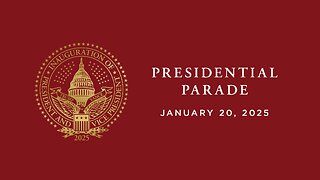Premium Only Content

【52】ウイルスの消毒について考える - 大橋眞
今回は、新型コロナウイルスに対する消毒について、夏井創傷治癒論と比較しながら考えていきます。
夏井先生の創傷治癒の理論は、傷口を消毒しないで湿潤環境を維持するというものです。消毒をしない理由は、傷口に残る細菌よりも、創傷治癒時に起こる表皮細胞の増殖反応が、消毒薬に弱いことであると考えられます。そのために、細菌が死ぬような濃度で消毒を行うと、表皮細胞の増殖ができないのです。
コロナウイルスはエンベロープで覆われているために消毒薬に関する感受性が高く、新型コロナウイルスに対する手指の消毒は問題ありませんが、気道上皮の消毒は粘膜バリアを守ることが条件になります。また、細胞内で増殖するウイルスに対する抗ウイルス薬の使用は、ウイルスによって破壊された上皮組織修復のための幹細胞に由来する前駆細胞の増殖を妨げる危険性があります。また、粘液を分泌する粘液細胞も同じ細胞に由来するために、粘液産生も抑制されます。免疫応答をつかさどる白血球の増殖の抑制も類似の機構で起こると、免疫応答の抑制が起こります。すなわち、抗ウイルス薬が有効に働くとすれば、感染のごく初期における短期間の使用に限られるということになります。
This time, we will consider disinfection of the new coronavirus in comparison with Natsui's wound healing theory.
Dr. Natsui's theory of wound healing is to maintain a moist environment without disinfecting the wound. The reason for not disinfecting is thought to be that the epidermal cell proliferation reaction that occurs during wound healing is more vulnerable to disinfectants than the bacteria that remain in the wound. Therefore, if the disinfection is performed at a concentration that kills the bacteria, the epidermal cells cannot proliferate.
Since the coronavirus is covered with an envelope, it is highly sensitive to disinfectants, and disinfection of fingers against the new coronavirus is not a problem, but disinfection of the airway epithelium is conditional on protecting the mucosal barrier. In addition, the use of antiviral drugs against the virus that grows inside the cell risks preventing the growth of stem cell-derived progenitor cells for repairing epithelial tissue destroyed by the virus. In addition, mucus cells that secrete mucus are also derived from the same cells, so mucus production is also suppressed. When the suppression of white blood cell proliferation, which controls the immune response, occurs by a similar mechanism, the suppression of the immune response occurs. In other words, if an antiviral drug works effectively, it is limited to short-term use in the very early stages of infection.
-
 LIVE
LIVE
Revenge of the Cis
1 hour agoEpisode 1432: Take Two
2,287 watching -
 5:43:05
5:43:05
Bitcoin Magazine
6 days agoLIVE: Donald Trump Inauguration | America's First Bitcoin President
25.3K -

In The Litter Box w/ Jewels & Catturd
17 hours agoINAUGURATION DAY | In the Litter Box w/ Jewels & Catturd – Ep. 723 – 1/20/2025
28.3K12 -
 LIVE
LIVE
GOP
15 hours agoDonald J. Trump Attends the Presidential Parade
2,589 watching -
 3:20:22
3:20:22
Steven Crowder
7 hours agoCrowder Inauguration Day Live Stream 2025 | The Return of Donald Trump!
1.05M370 -
 LIVE
LIVE
Right Side Broadcasting Network
7 days ago🔴 LIVE: The Inauguration of Donald J. Trump as the 47th President of The United States 1/20/25
68,451 watching -
 LIVE
LIVE
Kimberly Guilfoyle
2 hours agoLive Inauguration Day Coverage
1,497 watching -
 3:54:12
3:54:12
vivafrei
6 hours agoTHE DON OF A NEW AMERICA! Trump Inauguration Live Stream! Viva Frei Live!
98.5K69 -
 3:42:54
3:42:54
The Quartering
1 day agoTrump Inauguration LIVE Broadcast & Commentary With DecoyVoice, Hannah Clare & Styxhexenhammer!
200K39 -
 6:25:30
6:25:30
LFA TV
1 day agoLIVE: INAUGURATION OF PRESIDENT DONALD J. TRUMP
291K78